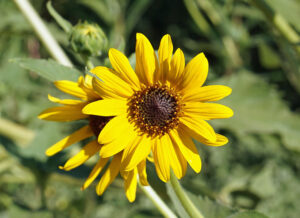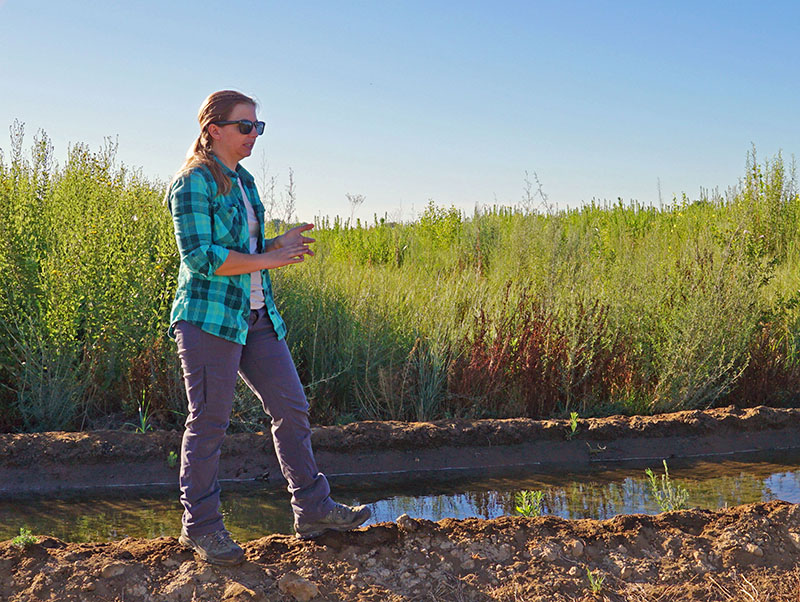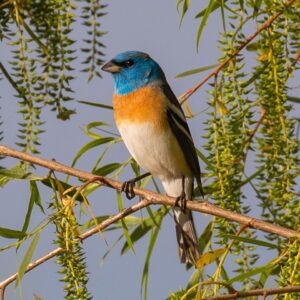
“It looks like a bunch of weeds,” said David Froba when he pulled over to look at an early stage restoration project near the confluence of the Tuolumne, San Joaquin and Stanislaus Rivers, just west of Modesto.
The “weeds” may not be as attractive as the ducks, geese, and songbirds that capture the attention of nature lovers when they visit the nearby San Joaquin River National Wildlife Refuge, but they’re just as necessary to the ongoing restoration of the riparian and floodplain habitat along the rivers.
Last Friday, Froba and several fellow members of the Stanislaus Audubon Society Board of Directors visited a restricted portion of the Dos Rios Ranch, which is slated to become California’s newest State Park. Coupled with the adjacent national wildlife refuge, the new park will be part of one of the largest floodplain and riparian restorations in the state. Much of the restoration has been managed by River Partners, a detail-obsessed organization dedicated to bringing life and sustainability back to the state’s rivers, floodplains, and riparian forests.
Mugwort, gum plant, native sunflowers, and creeping wild rye are among several components of the weedy understory of plants necessary to attract and sustain formerly abundant Valley birds like the Least Bell’s Vireo, which appeared on the wildlife refuge in 2005 after a decades-long absence from the San Joaquin Valley. Today, with the planting of the appropriate understory and hundreds of thousands of cottonwoods, willows, box elder and oaks, local nature lovers are hopeful that Yellow-billed Cuckoos, a threatened species throughout the west, will find their way back to the river habitat they found attractive for nesting as late as the 1960s.
The San Joaquin River National Wildlife Refuge has already been a major factor in the recovery of the Aleutian Cackling Goose, a winter visitor whose numbers had dropped to under six-hundred in the 1980s. Thanks to restoration work by the U.S. Fish and Wildlife Service, National Audubon Society and organizations like River Partners, today’s population of the once-endangered goose numbers over 200,000.
Another endangered species, the Riparian Brush Rabbit, is so sensitive that visitors to restricted portions of its small territory must bathe their shoes in a dilute bleach mixture to prevent tracking in RHDV2, a highly contagious and often fatal disease that only recently was discovered on the refuge. The tiny rabbits also require a precise mix of over- and understory vegetation to insure their recovery.

With the ongoing purchase and restoration of farmland along the rivers, River Partners is also working to bring back the floodplain that once served as nature’s way of controlling the rivers during high water flooding events.
“We want it to be flooded,” said River Partners’ Restoration Ecologist Haley Mirts, pointing to slightly higher ground along a section of the Dos Rios where an orchard still produces almonds.
Ultimately, that section of land will become a nursery for migrating juvenile salmon as they return from upriver spawning grounds, giving them space to mature and gain strength while safe from predators. The floodplain will mark a return to natural flood control and also serve an important role in groundwater recharge, a crucial need as Valley residents confront depleted aquifers, climate change, and reduced water allotments for lawns and gardens.
“We have one year, four year, and five-and-a-half year successional plantings,” said Mirts, as she explained the biological strategy for restoring the natural diversity that once typified river habitats throughout the state. Ultimately, the mix of native plants, trees, birds and mammals will provide a living library of nature, even while providing practical benefits like flood control, preservation of endangered species, and recreation.

For bird lovers like members of Stanislaus Audubon Society, the thrill of seeing native species like Swainson’s Hawk, Lazuli Bunting and Blue Grosbeak thrive in their natural habitat is exceeded only by their gratitude for the work of the Central Valley Joint Venture, including River Partners. Absent their dedication to restoring the loss of 95% or our riparian forests and 90% of our native wetlands, recovery of wounded nature would almost certainly be doomed.
Instead, the ongoing restoration of the San Joaquin Valley’s rivers, floodplains and spectacular wildlife provides multiple reasons to be optimistic about humankind’s role as nature’s guardian and steward.

Great article, thanks Eric. We are lucky to have River Partners working to restore the Central Valley’s natural ecosystems. It is fantastic that they have recently re-opened a Modesto office. I look forward to the time when county residents can visit Dos Rios State Park.
Thank you Elaine. More to come.
Excellent article, Eric.
Maybe some of the water Mapes Ranch has been exporting outside of our basin will be diverted to the new state park? However, the Mapes draw down for export may actually divert water away from the new park?
I am not a hydrologist, but if I were in a position to make any decision about the new park, I would want to know.
I am also wondering whether water that MID does not use should be diverted to the new park instead of its current destination at Mapes.
Anyone have any answers?
Another informative article and great pictures, Eric!
Thank you Babette. Any time we can run a photo by Jim Gain, the greatness level ramps up.